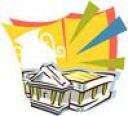GETTING TO KNOW PLACES / ΓΝΩΡΙΖΟΝΤΑΣ ΜΕΡΗ
by Maria Kontogeirgaki / από τη Μαρία Κοντογεωργάκη (6th grade / 6η Τάξη)
This is the information we got about the Folklore Museum of Stock Farming in Anavra from the village website (www.anavra-goura.gr) and a booklet issued by EKPOL Magnesia.
Παρακάτω βρίσκονται πληροφορίες που συγκεντρώσαμε για το Λαογραφικό Μουσείο Κτηνοτροφικής Ζωής στην Ανάβρα από την ιστοσελίδα του χωριού και ένα μικρό βιβλίο που εκδίδει η ΕΚΠΟΛ Μαγνησίας.
Λαογραφικό Μουσείο Κτηνοτροφικής Ζωής
Το Λαογραφικό Μουσείο Κτηνοτροφικής Ζωής Ανάβρας Μαγνησίας στεγάζεται στη κάτω στάθμη του κτηρίου του Νηπιαγωγείου. Είναι μια μεγάλη ενιαία αίθουσα στην οποία θα εκτίθενται αντικείμενα που έχουν ήδη συγκεντρωθεί και αναφέρονται στις συνήθειες και τον τρόπο ζωής των κτηνοτρόφων στη διάρκεια των τεσσάρων εποχών. Ήδη βρίσκεται στη φάση της υλοποίησης η μουσειολογική μελέτη εφαρμογής που έχει εκπονηθεί.
Το Μουσείο έχει είσοδο από το βοριά, από τη πλατεία, και έξοδο στο νοτιά σε δική του αυλή, που ανοίγεται στη θέα των γύρω βουνών.
Πηγή: www.anavra-goura.gr
FOLKLORE MUSEUM OF STOCK FARMING ANAVRA IN MAGNESIA
The Folklore Museum of Stock Farming in Anavra is a non-profit organization that belongs to and is run by the Local Authority of Anavra in Magnesia. The Museum, operates in its own building. The collections of the Museum consist of farming and livestock farming tools, textiles, utensils, and objects that were used in daily life by formers, residents of the region, until the 1950s. The collection has been formed almost entirely from donations offered enthusiastically by the residents of the village.
Museum responsible: Dr.Machi Karali
Telephone: 22320 91210, 91382, fax: 22320 91030
email: anavrama@otenet.gr, www.anavra-goura.gr
Address: Kindergarten Building (1st level). Local Authority Building of Anavra, 5010 Domokos
Group Visits: telephone required in advance
Admission: free
Source: EKPOL Magnesia

